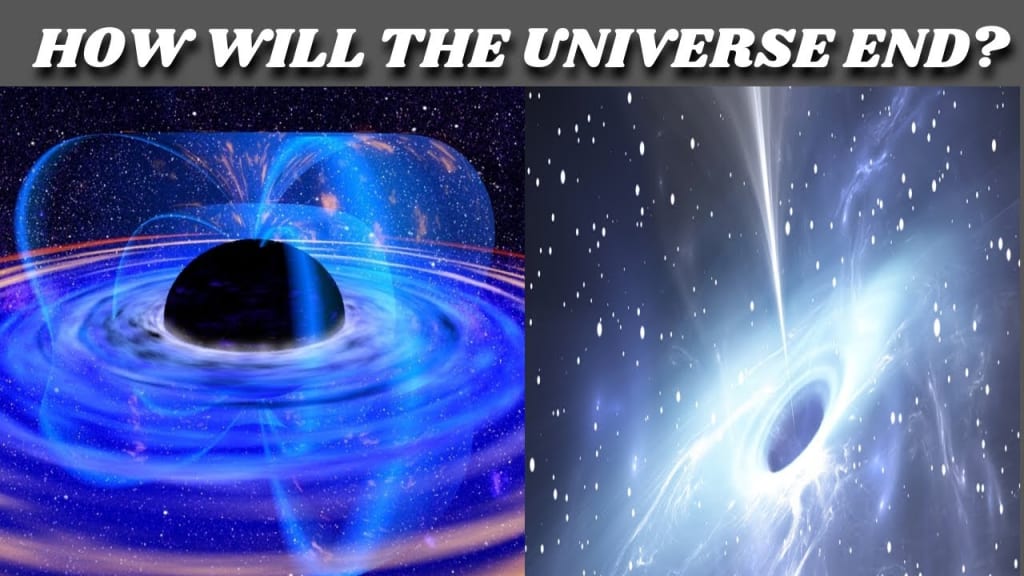The Big Crunch theory
Detailed theory with examples

Introduction:
The Big Crunch theory is one of the many speculative ideas concerning the fate of the universe. It suggests a scenario where the expansion of the universe, initiated by the Big Bang, eventually reverses due to gravitational attraction, leading to a collapse of cosmic proportions. This essay delves into the concept of the Big Crunch theory, its scientific basis, its implications for our understanding of the cosmos, and its relevance in modern cosmology.
Origins and Development of the Big Crunch Theory:
The Big Crunch theory emerged as a natural consequence of Einstein's theory of general relativity, which describes how gravity affects the curvature of spacetime. In the early 20th century, scientists, including Albert Einstein himself, realized that the universe might not be static but rather dynamic, either expanding or contracting. However, the prevailing view until the mid-20th century was that the universe was static and eternal.
The breakthrough came with the discovery of the cosmic microwave background radiation in 1965, providing compelling evidence for the Big Bang theory, which posits that the universe began as an incredibly hot and dense singularity approximately 13.8 billion years ago. Following this discovery, cosmologists began to contemplate the ultimate fate of the universe, leading to various hypotheses, including the Big Crunch.
The Concept of the Big Crunch:
According to the Big Crunch theory, the expansion of the universe will eventually slow down and reverse direction due to the gravitational attraction of matter and energy. As galaxies move farther apart from each other, the gravitational pull between them weakens. However, in a universe dominated by matter and energy, this expansion may not continue indefinitely. Instead, gravity will eventually overcome the outward motion, causing the universe to contract.
In the final stages of the Big Crunch, galaxies, stars, and other cosmic structures would draw closer together, eventually collapsing into a hot, dense state similar to the initial conditions of the Big Bang. The universe would reach a singularity, a point of infinite density and temperature, marking the end of spacetime as we know it.
Evidence and Challenges:
While the Big Crunch theory is an intriguing concept, several lines of evidence suggest that it may not accurately describe the fate of the universe. Observations of distant supernovae, for example, have revealed that the expansion of the universe is accelerating, rather than decelerating as one might expect in a universe destined for a Big Crunch. This discovery, made in the late 1990s, led to the formulation of the concept of dark energy, a mysterious force driving the accelerated expansion.
Furthermore, measurements of the cosmic microwave background radiation and the large-scale distribution of galaxies also support the idea of an accelerating universe dominated by dark energy and dark matter. These observations pose significant challenges to the viability of the Big Crunch theory and have led many cosmologists to favor alternative scenarios, such as the Big Freeze or the Big Rip.
Implications and Significance:
Despite the challenges posed by observational data, the Big Crunch theory remains a fascinating concept with profound implications for our understanding of the cosmos. If the universe were to collapse in a Big Crunch, it would imply a cyclical nature to cosmic evolution, with the universe undergoing successive cycles of expansion and contraction.
Moreover, the idea of a Big Crunch raises intriguing questions about the ultimate fate of life, intelligence, and consciousness in such a scenario. Would intelligent civilizations have the ability to survive and thrive in the tumultuous environment of a collapsing universe? Could they harness the energy of the collapsing cosmos to transcend physical limitations and explore new realms of existence?
The Big Crunch theory also prompts us to reconsider our place in the universe and our relationship to the cosmos as a whole. It reminds us of the impermanence of all things and the profound interconnectedness of the universe, from the smallest particles to the largest cosmic structures.
Conclusion:
In conclusion, the Big Crunch theory offers a compelling yet speculative vision of the ultimate fate of the universe. While it faces challenges from observational data and alternative hypotheses, its significance lies in its ability to stimulate scientific inquiry and philosophical reflection. Whether the universe will ultimately collapse in a fiery cataclysm or continue expanding into eternity remains one of the greatest mysteries of cosmology, awaiting further investigation and discovery.
About the Creator
Chrispus Mbusa
I am a Mechanical Engineer who believes in Science because it has proven facts about life. I am a father and a researcher






Comments
There are no comments for this story
Be the first to respond and start the conversation.